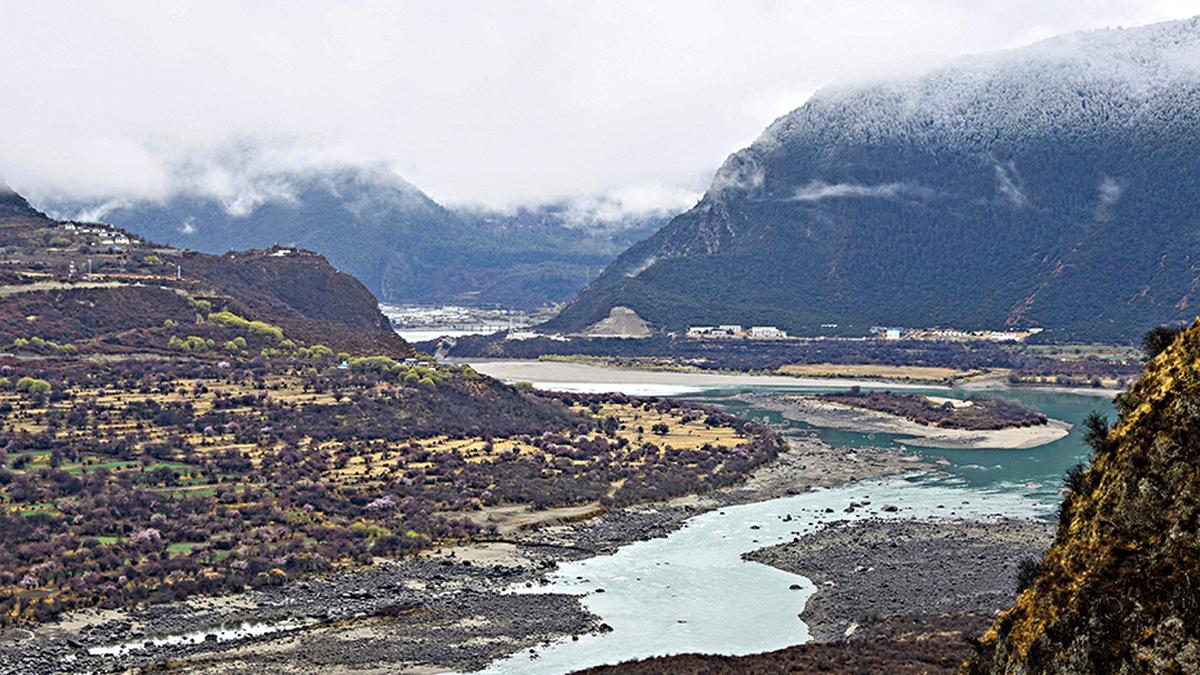A picture, of 2021 that shows the Yarlung Zangbo Grand Canyon in Nyingchi, China. File
| Photo Credit: AFP
GUWAHATI
China’s proposed 60,000 megawatt hydropower project on the Yarlung Tsangpo, the upstream of the river Brahmaputra in Tibet, will not be a dam but a ‘water bomb’ to be used against India and other lower riparian countries, Arunachal Pradesh MP Tapir Gao said on Tuesday.
Also Read | China approves world’s largest, $137-billion dam on the Brahmaputra close to the Indian border
Speaking at a seminar highlighting the possible devastating impact of China’s Great Bend Dam, he reminded global water experts about the June 2000 floods caused by a “similar water bomb” that washed away more than 10 bridges on the Siang River in the central part of his State.
The Great Bend is beyond the India-China border, so named because the Yarlung Tsangpo takes a sharp southward bend to flow into Arunachal Pradesh as the Siang, which meets two others – Dibang and Lohit – in Assam to form the Brahmaputra.
“India needs to build a dam on the Siang to prevent disasters downstream due to the possibility of sudden release of water from the proposed dam at the Great Bend,” Mr. Gao, who represents the Bharatiya Janata Party from the Arunachal East constituency, said at the seminar in Guwahati.
Also Read | China’s dam project opens the floodgates of concern
Villagers and NGOs have been opposing the 11.2 gigawatt Siang Upper Multipurpose Project planned near Geku village in the Upper Siang district. In April 2022, the Centre directed the NHPC to carry out a pre-feasibility survey to understand the project’s technical, economic, social, and environmental feasibility.
Author and Tibetologist Claude Arpi said China not only wants to become a power giant by building the dam in Medog county, but it also has plans to divert the water of Yarlung Tsangpo to the Yellow River through numerous tunnels.
Control of river sources
Bertil Lintner, an expert on Asian politics and history, said China invaded Tibet in the 1950s primarily to control the mega rivers originating in the ‘Roof of the World’, as the Tibetan Plateau is called for its altitude and vastness.
“China has constructed 11 mega dams only on the Mekong River, which is the lifeline of five other countries,” he said, underlining the need for India to have a water-sharing agreement with China, the lack of which may lead to bilateral conflicts between the major nations.
Chairman of the Brahmaputra Board, Ranbir Singh, pointed out that the Brahmaputra Basin is the only water-surplus river basin in India, with the rest being water-deficient.
“With this dam in China, are we looking at a water-deficient Brahmaputra river basin?” he asked, calling for a multi-pronged strategy, including garnering international support against the Great Bend Dam and collaborations.
Experts from Nepal and Bhutan aired their concerns about dams being built in the Tibetan Plateau. Specialists in ecology, water resource management, international relations, environmental law, engineering, policy formulation, governance, and economy discussed water security, ecological integrity, and disaster resilience in the sub-Himalayan region in the context of the Brahmaputra.
A key takeaway of the event organised by Asian Confluence was the need for more scientific studies to be initiated by India to develop solid ground for international support against China’s proposed dam.
Published – April 08, 2025 05:36 pm IST
